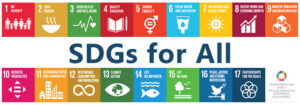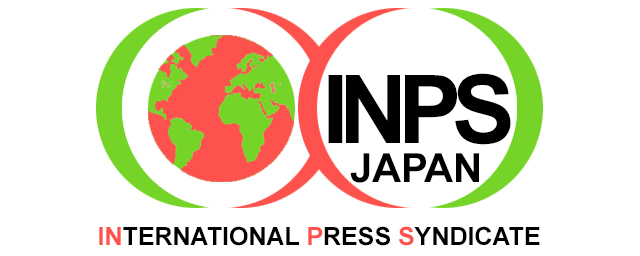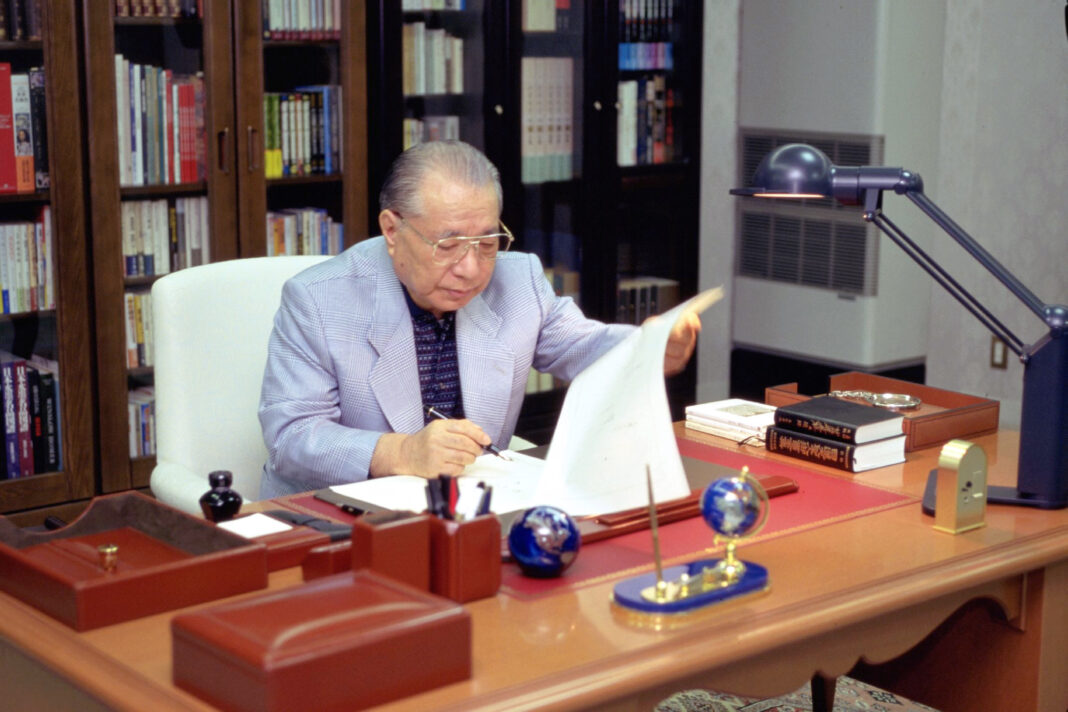Interview with Soka Gakkai International (SGI) President Dr. Daisaku Ikeda
BERLIN | TOKYO (IDN-INPS) – Why is it important to highlight the role of young people in ushering in a New Era of Hope? Will the landmark UN Conference to negotiate “a legally binding instrument to prohibit nuclear weapons, leading towards their total elimination” succeed? How can UN Secretary-General António Guterres ensure sufficient support from the international community for implementing the SDGs and the Paris Climate Change Agreement?
Ramesh Jaura, Editor-in-Chief and International Correspondent of IDN, flagship agency of the International Press Syndicate group, asked SGI President Dr. Daisaku Ikeda these and related questions in an e-mail interview. Read the Q&A in full: JAPANESE
Question: You have been publishing a peace proposal every year since 1983. For 2017, you have focused on the role young people could play and titled the Peace Proposal “The Global Solidarity of Youth: Ushering In a New Era of Hope.” Could you please explain why it is important to pay attention to the role of young people?
Dr. Daisaku Ikeda: This is because I firmly believe that each young person is a source of hope, an embodiment of the future. The title of the proposal reflects my belief that if the world’s youth come together to act in solidarity, they can usher in a new era of hope even in the face of the many grave challenges that confront our world today.
In the process of developing the Sustainable Development Goals (SDGs), which are a key focus of this year’s proposal, the United Nations conducted a survey that drew a particularly strong response from youth. Of the more than 7 million responses to a UN survey, more than 70 percent came from members of the younger, under-30, generations.
The SDGs differ from the previous Millennium Development Goals (MDGs) in many ways. But what I think is especially important is their character as a “people’s agenda,” formulated and adopted through this kind of extended process of input from civil society, from youth in particular. The resulting SDGs comprise 17 goals and 169 specific targets related to eliminating poverty and hunger, combatting climate change and achieving gender equality, among other objectives.
To achieve these challenging goals will require a strengthening of efforts at the national level. Likewise, the strong support of civil society will be indispensable. The key to the success of the SDGs lies in taking full advantage of their character as a people’s agenda in order to forge a global solidarity of action. Young people can and must play a pivotal role in this.
As an NGO with consultative relations with the UN, the SGI has been engaged in the fields of disarmament, human rights education, ecological integrity and humanitarian relief. In each of these areas, our youth members have taken the lead. Young people have the inherent capacity to use their creativity to generate new and hopeful visions of the future and to promote their realization with passion and action.
In our world today, there are some 1.8 billion young people aged between 10 and 24. If these younger generations can find ways of working together for nonviolence and for the protection of peace and human rights, their efforts are certain to promote important progress toward the kind of global society envisaged in the SDGs, one in which “no one is left behind.”
Q: Global solidarity involves rising above national, racial, ethnic, economic and ideological differences. In what way can young people in your view practice global solidarity?
Dr. Daisaku Ikeda: I believe that the crucial starting point for coming together across various differences and forging unity is shared awareness, shared concern. By this I mean the sense of anguish we all naturally feel at the plight of refugees, for example, or the strong desire to stop environmental destruction, or to seek a world without war.
These kinds of shared sentiments and aspirations are in fact the foundation for the cooperative relationships that the SGI has been able to develop with other organizations in the course of our own activities in support of the goals of the UN.
In the field of human rights, for example, our collaboration with other groups for adoption of the UN Declaration on Human Rights Education and Training (December 2011) was inspired and made possible by a shared sense of the urgency of counteracting the growing trends toward discrimination and xenophobia. Two years later, in 2013, we worked with Amnesty International and Human Rights Education Associates (HREA) to form a civil society coalition called Human Rights Education 2020 (HRE 2020). This March, a new exhibition, “Transforming Lives: The Power of Human Rights Education,” developed with HRE 2020 and other organizations, was launched at the UN Headquarters in Geneva.
Likewise, last May, SGI youth and other youth groups launched Amplify, an international network of young people working for nuclear weapons abolition. Its goal is to promote activities to bring the era of nuclear weapons to a close.
The foundation for solidarity is this kind of shared feeling or aspiration, coupled with the effort to try to think collaboratively about the kinds of actions that will be effective in generating real solutions.
The idea of education for global citizenship is likewise very important for us and this is one of the reasons why we have been working to raise awareness among younger generations through such vehicles as exhibitions, etc., on the themes of various global challenges.
In this context, perhaps the most critically important thing is the individual friendships that develop naturally through working together across differences.
Even if we speak of “global solidarity,” the really important thing is not the scale of the effort, but the depth and strength of individual human connections. This is a measure of the strength of solidarity—the kind of solidarity that can meet difficult challenges and transform reality. Friendship shared among individuals is the essence of global solidarity of youth.
Q: I vividly recall the SGI co-facilitated International Youth Summit in August 2015 in Hiroshima. Are you planning an event focusing on youth this year to commemorate the 60th anniversary of your mentor, second Soka Gakkai president Josei Toda, issuing a declaration calling for the prohibition and abolition of nuclear weapons?
Dr. Daisaku Ikeda: We are planning to hold a youth summit for the renunciation of war in Kanagawa Prefecture, where second Soka Gakkai president Josei Toda issued his declaration calling for the prohibition and abolition of nuclear weapons. This will bring together youth representatives from many regions, including young people from Hiroshima, Nagasaki and Okinawa in Japan.
On September 8, 1957, Josei Toda stated before a gathering of 50,000 that nuclear weapons were an absolute evil and a fundamental threat to the right of the world’s people to existence. In doing so he was declaring that their use was impermissible—for any reason, under any circumstance.
He further stated that this was to be the foremost of his teachings, and that he was bequeathing to us—the youth of that era—the task of creating a new current of history that would lead to the prohibition and abolition of nuclear weapons. Since that time, I have embraced this as my mentor’s legacy and have worked tirelessly to forge a path toward a world without nuclear weapons.
In recent years, the SGI is working with the International Campaign to Abolish Nuclear Weapons (ICAN), other NGOs and the representatives of different faith communities in a movement to realize the adoption of a treaty outlawing nuclear weapons. The spiritual wellsprings for the SGI’s efforts can be found in President Toda’s declaration.
Against the backdrop of a heightened awareness of the inhumane nature of nuclear weapons, negotiations on such a treaty have finally been initiated at the UN. The adoption of such a treaty would clearly establish the international norm prohibiting the use of nuclear weapons – without any exception or recognition of mitigating circumstance. Such a treaty would resolve the lack of an explicit legal prohibition against nuclear weapons that was one of the focal points of the 1996 Advisory Opinion of the International Court of Justice.
In order to ensure the success of the treaty negotiations, and also to secure the effectiveness of a treaty once adopted, it is vital to bring together and give concrete form to the voices and concerns of civil society, in particular the young people who strongly desire the end of the era of nuclear weapons.
It is my earnest hope that the youth summit in Kanagawa will contribute to the realization of this goal.
Q: Would you like to share your expectations of the second session (June 15–July 7) of the UN Conference to negotiate “a legally binding instrument to prohibit nuclear weapons, leading towards their total elimination” that will follow the first session, which ended this past March 31?
Dr. Daisaku Ikeda: The first session of negotiations on a treaty prohibiting nuclear weapons was held this past March in New York. It was attended by the representatives of 130 countries, more than two-thirds of the UN member states, as well as many representatives of global civil society. This was a very welcome development, as was the very constructive tone of the debate on the broad outlines of a treaty.
Representatives of the SGI attended the negotiating session, where they were given the opportunity to address the conference and present a working paper. Ours was one of the many voices from government and civil society representatives expressing the strongly held determination to reach agreement on a treaty. The chair of the conference, Ambassador Elayne Whyte Gómez of Costa Rica, has expressed her hope that a treaty text can be completed and adopted by the last day of the second negotiating session in July.
I think it is crucial that as many countries as possible participate in the next session of the negotiations. This of course includes the nuclear-weapon states and the states that rely on them for extended deterrence – states that were almost entirely absent from the first session. We need to remember that the sharply divergent viewpoints do not make dialogue impossible; they make it necessary.
There are a number of concerns – such as recognition of the catastrophic consequences of any use of nuclear weapons and concern about the risks of an accidental or unintended nuclear detonation – that are fundamentally shared by all states, including the nuclear-weapon states and their nuclear-dependent allies. This is something that was affirmed in the Final Document adopted by the 2010 Review Conference of the Parties to the Treaty on the Non-Proliferation of Nuclear Weapons (NPT). With such shared recognition of concerns as the basis, debate should center on the NPT Article VI-stipulated obligation to achieve nuclear disarmament. There should be an effort to clarify the points of convergence between the security concerns of each state and the goal of a world without nuclear weapons.
It is my hope that the second session will, like the first, provide opportunities for open debate with participation of civil society, and that the drafting of a nuclear weapons prohibition treaty will proceed as a shared global undertaking with an eye to adoption by the end of the session.
Q: What role would you wish Japan to take upon itself in the forthcoming negotiations?
Dr. Daisaku Ikeda: Japan has a profound historical responsibility and mission as the only country to experience the use of nuclear weapons in war. I have strongly encouraged recognition of that fact and urged Japan to participate actively in the negotiating conference. It was thus extremely regrettable that the Japanese government did not participate in the first session. At the same time, however, there were many representatives of Japanese civil society at the conference. They made significant contributions by adding their voices to the call for the prohibition and abolition of nuclear weapons along with concrete proposals regarding the content of the treaty.
Three hibakusha shared with the conference their personal experiences of surviving the atomic bombings. By doing so, I think they helped clarify and reaffirm the fundamental basis and starting point for a nuclear prohibition treaty—the intensely felt desire and determination that the horrors of nuclear weapons use never be visited again on anyone else.
The NPT has long been regarded as the cornerstone of nuclear disarmament and nonproliferation negotiations. It was adopted on the basis of an awareness of the devastation that a nuclear war would produce and of the need to “take measures to safeguard the security of peoples.” In light of this fundamental orientation of the NPT, it should be clear that a nuclear weapons prohibition treaty would in no way run counter to the objectives of the NPT, but would instead reinforce movement toward the goals of nuclear disarmament and nonproliferation that the NPT seeks.
I think it is important to recall the joint statements that Japan, along with the foreign ministers of nuclear-weapon and nuclear-dependent states, adopted at the Non-Proliferation and Disarmament Initiative (NPDI) Ministerial Meeting held in Hiroshima in April 2014 as well as at G7 foreign ministerial meetings. These have stressed that the ongoing discussion on the humanitarian impact of nuclear weapons should be “a catalyst for a united global action towards the goal of a world free of nuclear weapons,” and that the representatives of these states “share the deep desire of the people of Hiroshima and Nagasaki that nuclear weapons never be used again.”
Japan has a special mission and responsibility to deepen and enhance debate on the question of what is actually necessary to achieve a world without nuclear weapons and to help forge a path to that goal. So I strongly hope that the Japanese government will return to this starting point and will decide to participate in the second session of the negotiations.
Further, Japan should work with The Netherlands, who participated in the March conference as a country under the umbrella of extended nuclear deterrence, in order to bridge the differences between the nuclear-weapon and non-nuclear-weapon states, in this way making a unique and vital contribution to the success of the negotiations.
Q: You have proposed an earliest possible holding of a U.S.-Russia summit in order to reinvigorate the nuclear disarmament process. What prospects do you see of such a meeting taking place in the near future?
Dr. Daisaku Ikeda: When Russian President Vladimir Putin and U.S. President Donald J. Trump spoke by phone in January soon after the latter’s inauguration, they agreed that there were signs of improvement in US-Russian relations, which had been chilly following their disagreement over the Ukraine situation that arose three years earlier.
The recent U.S. military strike against targets in Syria, however, has greatly strained relations again, casting a pall over future prospects. The confrontation between the two countries has impacted UN Security Council deliberations on Syria, with a negative impact on the international community as a whole. It is crucial that there be a prompt search for some means of easing tensions.
On April 12, five days after the U.S. bombing of Syrian targets, U.S. Secretary of State Rex Tillerson visited Moscow. There he met with Russian Foreign Minister Sergey Lavrov, followed by a meeting with President Putin. Further efforts will be required to ensure that avenues for dialogue between the two countries remain open in order to prevent a further escalation of tensions.
Even when a process of dialogue produces intense exchanges of strongly held and expressed views, it can serve as a step toward improved relations by enabling both sides to understand the concerns of the other. President Trump and President Putin spoke by phone this past May 2. It is important to all such means toward sustaining a process of dialogue.
At present, both Russia and the United States have budgeted enormous sums for nuclear weapons and related matters, and there is real concern that this will only increase. Reducing these outlays would free up resources that could be used for the enhancement of healthcare and other social services in both countries.
When they spoke immediately following President Trump’s election last November, they noted that 2017 would mark the 210th anniversary of diplomatic relations between their nations. They agreed to work for “a return to pragmatic, mutually beneficial cooperation in the interests of both countries.” It is my earnest hope that, as they seek areas of common ground, they will initiate dialogue on nuclear disarmament as a pivotal element in both countries’ actions.
Q: What challenges do you think the new UN Secretary-General António Guterres is facing and how do you think he could handle these? How can the UN chief ensure sufficient support from the international community for implementation of the SDGs and the Paris Climate Change Agreement?
Dr. Daisaku Ikeda: Since its establishment, the UN has seen the adoption of many foundational international norms and conventions, starting with the Universal Declaration of Human Rights. At the same time, it has made important contributions in establishing the ideals and goals for the shared striving of humanity, including such key concepts as sustainable development and a culture of peace.
These efforts have been part of what the organization’s second secretary-general, Dag Hammarskjöld, referred to as its “creative evolution” based on the spirit of the Charter.
The UN has promoted ever-greater shared awareness of the many global challenges we presently face and has in recent years, for example, played a key role in the adoption of the SDGs and the Paris Agreement to combat global warming.
But as the refugee crisis demonstrates, even when there is a broadly shared recognition of the critical nature of a problem, it is often difficult to muster effective international cooperation for its resolution. I think that the greatest challenge the UN now faces is that of how to strengthen and accelerate the shift from a shared awareness to shared action.
In this sense, I deeply resonate with the stress Secretary-General António Guterres has placed – based on his 10-year tenure as the UN High Commissioner for Refugees – on the importance of a “culture of prevention” and for making gender equality a top priority.
As climate change demonstrates, no country can remain aloof from the impacts of global threats. Thus, realizing a culture of prevention would be of benefit to all countries. Pursuing this goal provides a strong incentive for shared action in support of the UN’s efforts.
As I stressed in this year’s peace proposal, gender equality is not only indispensable in conflict resolution and peacebuilding efforts, it is pivotal to efforts to advance the SDGs on all fronts.
Secretary-General Guterres has demonstrated leadership in realizing gender equality within the UN’s leadership structures, appointing women as Deputy Secretary-General, Under-Secretary-General, Chef de Cabinet and Senior Advisor on Policy. I strongly welcome these actions.
I am confident that the new secretary-general’s focus on a culture of prevention and gender equality will drive progress in the UN’s undertakings, such as the achievement of the SDGs and the implementation of the Paris Agreement. To this end, it is, as I’ve already noted, crucial that collaboration between the UN and civil society be strengthened across all sectors. In particular, I think it is absolutely vital that greater efforts be made to create opportunities for the active engagement of youth.
I have strong expectations that, under Secretary-General Guterres’ leadership, collaboration with civil society and the engagement of the world’s youth will serve as a foundation for strengthening of the United Nations and for its creative evolution into the future. [IDN-InDepthNews – 15 May 2017]
Photo: Dr. Daisaku Ikeda. Credit: Seikyo Shimbun.




